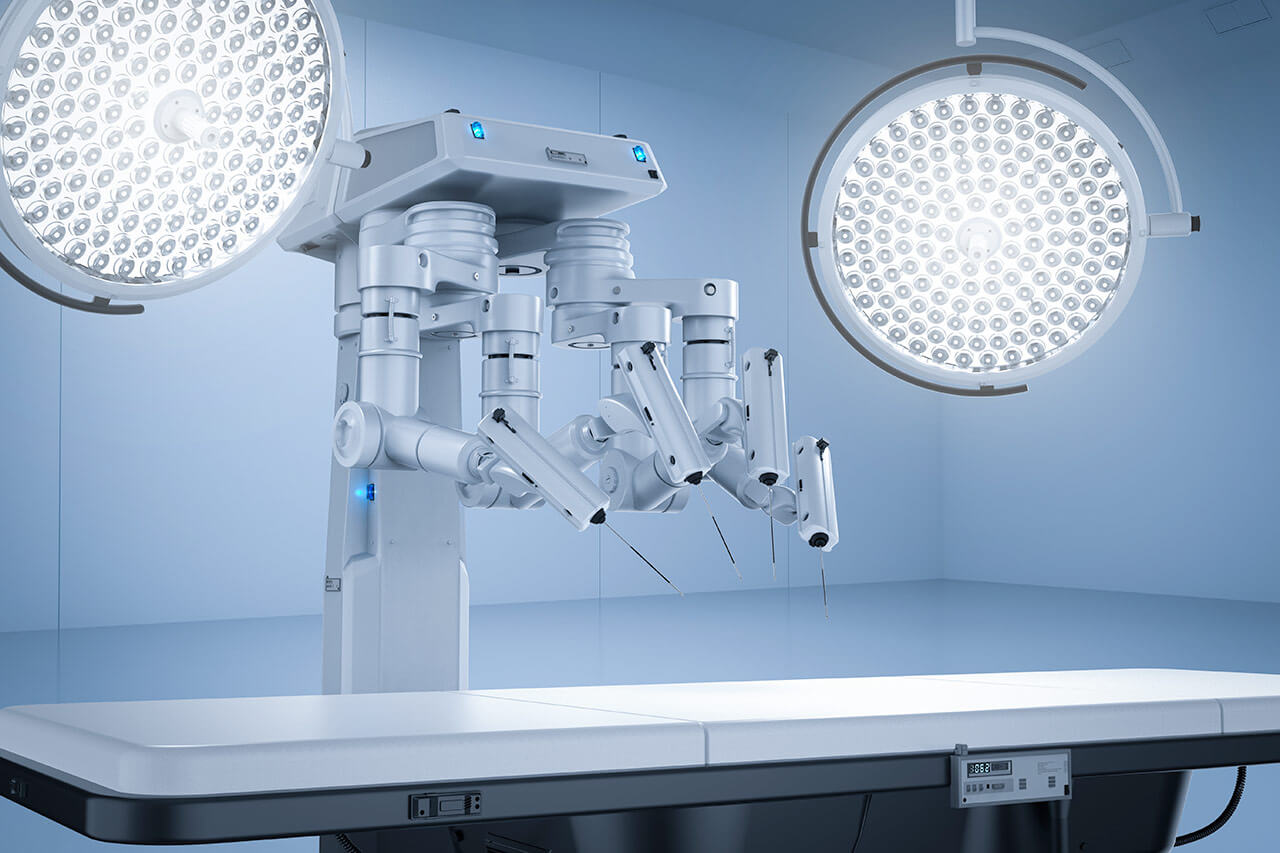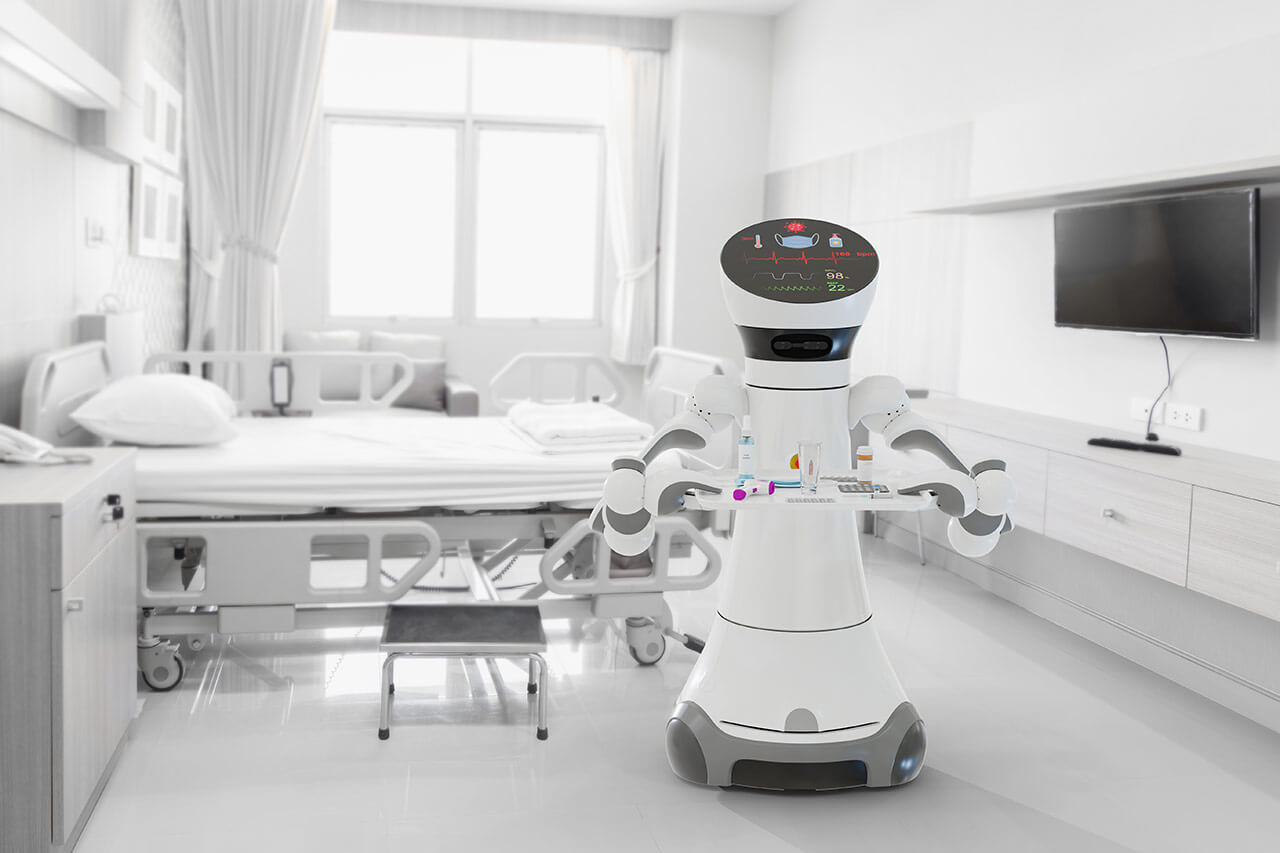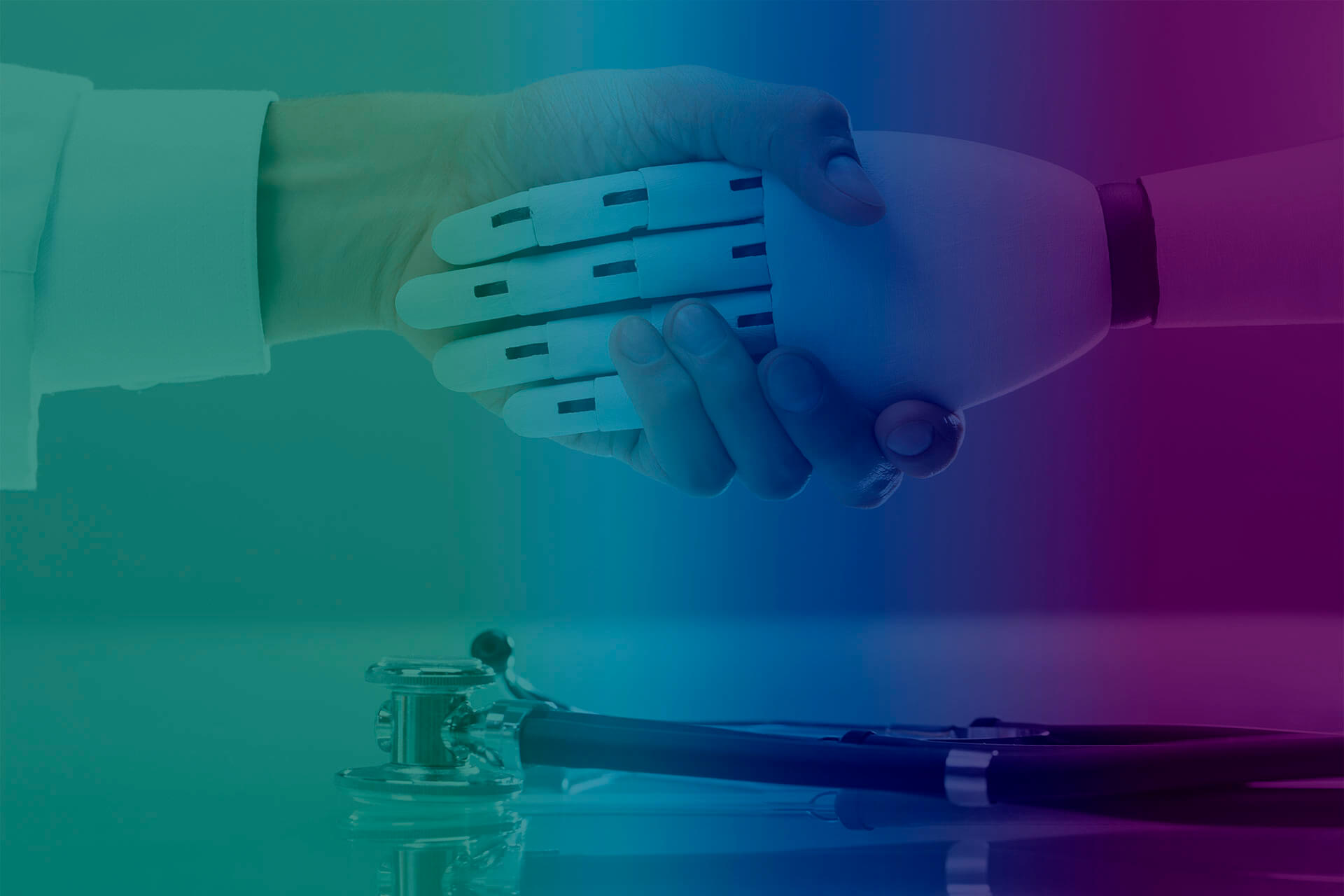Through Artificial Intelligence (AI), robots in the medical field are transforming the way surgeries are performed, the way patients are cleaned, cared for or disinfected.
“Robotics for patient care and assistance in hospitals, to optimise all processes involving healthcare professionals and for the surgical operations themselves, is the present and the future of hospital technology. ”
Health centres nowadays have the option of having robots in practically any room, whether in the operating and surgical areas, waiting rooms, patient rooms, cleaning areas…
The adaptation of Artificial Intelligence and robotic surgery to the clinical industry is an unstoppable phenomenon. These devices, in the medical field, are transforming the way surgeries are performed, cleaned, cared for or disinfected. These robots, during the COVID-19 pandemic, have been deployed throughout hospitals and clinics, delivering excellent performance.
Thus, the benefits of robotics in healthcare include high quality patient care, greater operational efficiency and a safer working environment.
That is why the future of robotics and healthcare involves technological elements that advance machine learning, data analysis, computer vision and other technologies. All with the aim of completing tasks autonomously, efficiently and accurately.
At Etkho we have selected some of the main types of robots used in hospitals and their different areas.
Surgical assistance robots
Thanks to improvements in motion control technologies, surgical assisting robots have become increasingly accurate and indispensable in hospitals.
These robots help surgeons perform complex micro-procedures without making large incisions. Using AI, they navigate specific areas of the body, avoiding nerves and other obstacles. And they can even complete tasks on their own.
They are particularly prominent in minimally invasive thoracic surgery and orthopaedic surgery.

Cleaning robots
Robots that disinfect hospitals have also grown in number and use exponentially. This is the case with ultraviolet robots, which can remove 99.99% of viruses from a room in ten minutes. Xenex’s robot uses pulsed xenon light to disinfect operating theatres and hospital rooms.
Diagnostic robots
The great leap forward for diagnostic robotics in hospitals did not come with the coronavirus. It was a few years ago when the news broke: “Robot beats 15 doctors in diagnosing brain tumours“. Specifically, a Chinese artificial intelligence system, trained for 10 years, beat a team of 15 Chinese doctors in diagnosing brain tumours and haematomas in sick patients, in a competition organised by the Tiantan hospital in Beijing.
In just a quarter of an hour, the system made 87 per cent correct diagnoses out of a total of 225 cases, compared to 66 per cent for the team of human specialists.
It was an example that served as a trigger for the push for robot-based diagnostic technology in the hospital. We are talking about devices capable of storing hundreds of thousands of images of diseases related to, for example, the nervous system.
In other words: it is no longer just the introduction of surgical robots, present in countless operating theatres around the world, but diagnostic medical robotics is even being able to perform biopsies or administer drugs to localised organs. All, thanks to artificial intelligence and 5G.
The various innovations, with the development of telemedicine and telematic diagnostics at the forefront, have redefined hospital wards. Medical Tele-diagnosis Robot is a robot equipped with sensors and an internet connection that enables remote diagnostics. And researchers at the University of Houston have designed a robotic hand that, using a rubbery semiconductor material, collects information about the patient through a “smart skin” and sends it to the doctor.
These robots can also be used to minimise the invasive effects of diagnostic tests and treatments, such as biopsies, tumour removal or heart valve repair. In addition, many endoscopies are already carried out using microrobots. And specifically on the coronavirus, hospitals such as Vall d’Hebron in Barcelona are involved in research on a robot with artificial neurons to speed up the diagnosis of Covid.
Remote monitoring system
When thinking about robots in hospitals, it is often alluded to that they will eventually replace doctors and medical staff, but nothing could be further from the truth. Today, these technologies are a crucial support for healthcare staff, a much-needed and effective help. This is also seen in the remote monitoring system robots.
We must stress that the pandemic has triggered dramatic changes in healthcare practices. As a result, hospitals, especially in the area of telemedicine, are increasingly using different digital imaging platforms integrated with hospital networks, enabling remote monitoring of multiple patients.
This remote monitoring creates opportunities for clinical teams to assess patients’ conditions, without the need to be physically present in the same room.
In this respect, remote monitoring robots enable the transmission of high-definition video, as well as thousands of data and analyses to be obtained on a daily basis. In practice, this means that healthcare staff can assess a patient’s condition via a connected PC, tablet or screen from anywhere in the hospital.
One example is the famous quadruped robot Spot from Boston Dynamics. Since 2020, this robot has been helping to care for coronavirus patients remotely. The “hospital” version of Spot integrates a tablet on top, like a “digital face”, from which doctors interact with patients for remote monitoring and care.
Robots similar to Spot found in healthcare facilities also integrate more solutions, such as monitoring patient body temperature, pulse, respiratory rate and oxygen saturation.
Robots for patient care
Leaving aside robotic surgery, the bulk of hospital robotic technology is concentrated in service and social robots. That is, robots designed to assist and even interact with patients.
Assistive robots ease the daily burden on healthcare workers by handling various logistical tasks, while social robots interact directly with humans, assisting in long-term care and offering socialisation and monitoring.
Care robots operate mostly autonomously, and can send a report upon task completion, set up patient rooms, track and restock supply cupboards, file orders, transport bed linen from laundry facilities… Social robots also work together to minimise caregiver workloads and improve patients’ emotional well-being.
But this is not all. Especially since the Covid-19 pandemic, hospitals have been gradually using more and more robotic devices that, for example, measure temperature, carry medicines and food and interact with humans.

This is the case of PAL Robotics’ mobile devices, TIAGo Conveyor and TIAGo Delivery, which are used as assistants to healthcare staff for the delivery of food trays to patients or other materials. Between them, they transport sensitive goods that should only be accessible to authorised personnel, such as medicines, medical supplies and blood samples.
Another of the other robotic ‘stars’ in healthcare is the famous Vici. This robot has a screen, speakers and a microphone, and is used by doctors to communicate with the patient. It also has a stethoscope and can perform basic tests such as temperature measurement. In China, a pioneer country along with the United States in investing in hospital robotics, robots have also emerged that can open and close doors and take the lift autonomously to deliver medicines to patients.
Also related to patient care are robots that can clean and disinfect different spaces, such as those from the company Xenex. These machines can quickly disinfect any room in just five minutes.
The Toyota brand also has a robot on the market designed to help bedridden patients, which can pick up a certain object that the person needs, close the curtains or turn on the television.



